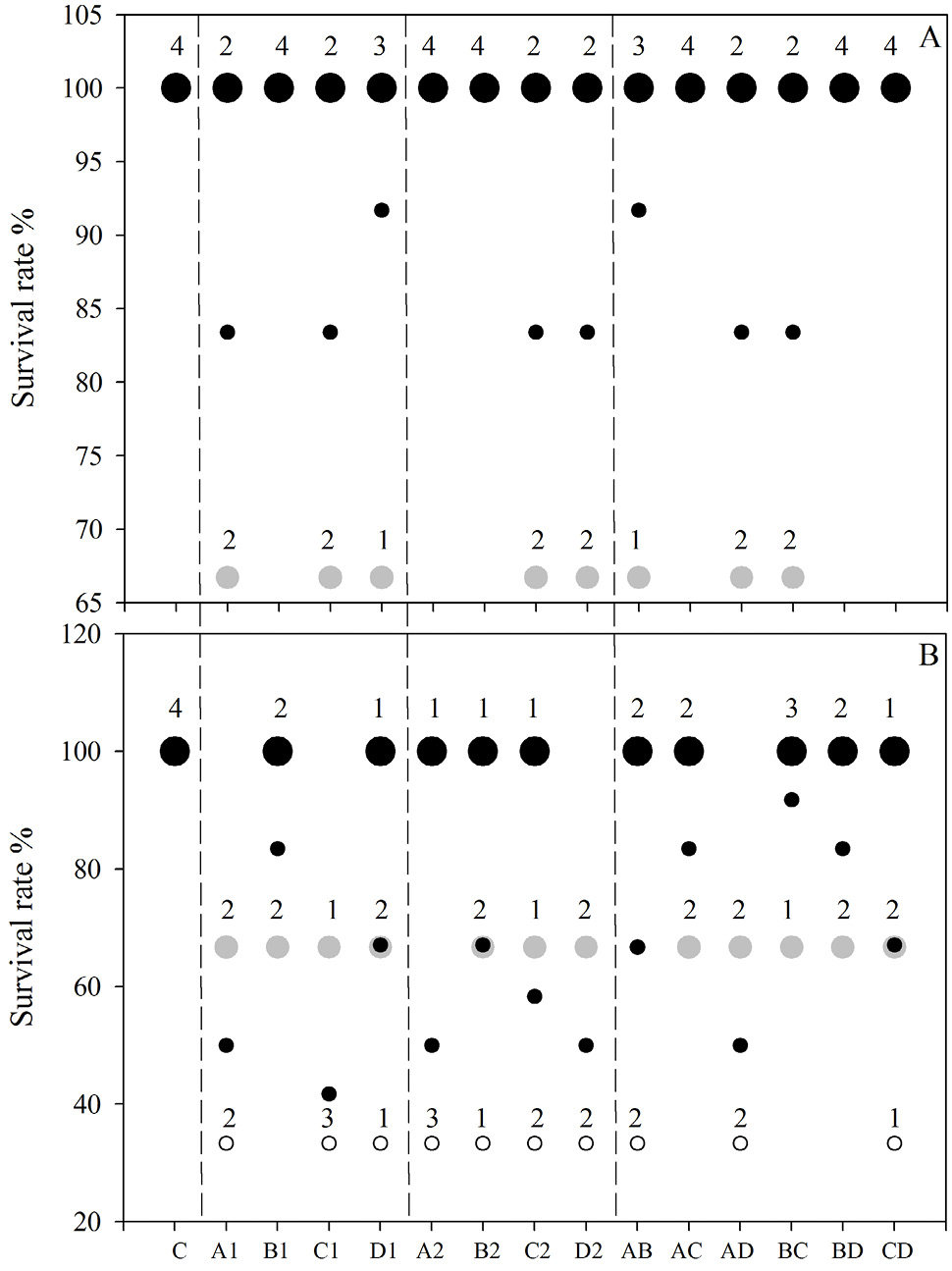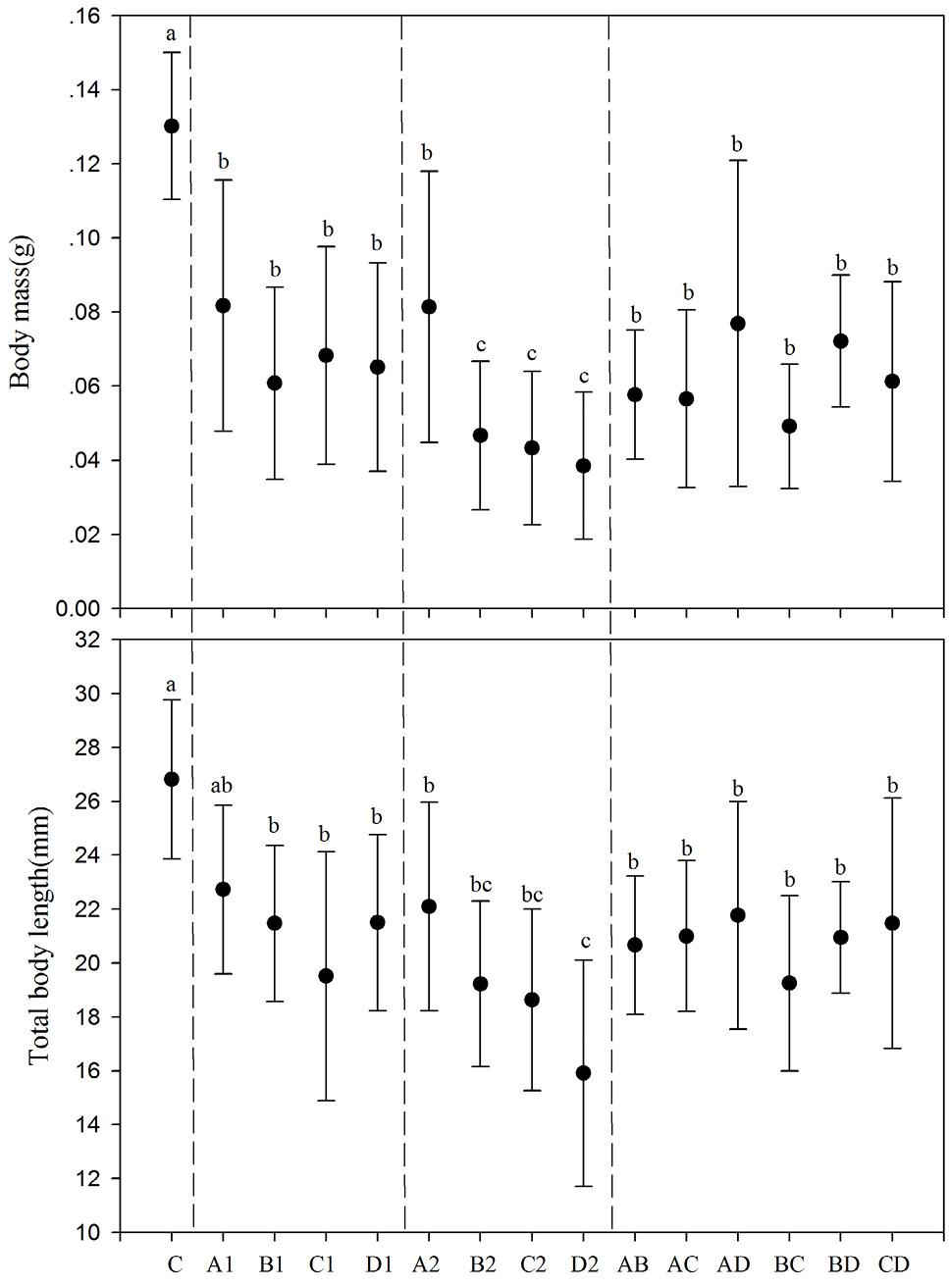Effects of Four Individual Pesticides and their Pairwise Combinations on the Survival and Growth of the Tadpoles of Two Anuran Species
Effects of Four Individual Pesticides and their Pairwise Combinations on the Survival and Growth of the Tadpoles of Two Anuran Species
Li Wei, Wei-wei Shao and Zhi-hua Lin*
The survival of F. limnocharis (A) and M. fissipes (B) tadpoles when exposed to different concentrations of separate and combined pesticides. Treatments are abbreviated as follows: C, Control; A, Chlorantraniliprole; B, Penoxsulam; C, Pymetrozine; D, Haloxyfop-P. Large black circle, grey circle, white circle and small black circle represent 100%, 66.7%, 33.3% and mean survival, respectively. The numbers above on the circles represent the treatment numbers.
The growth of F. limnocharis tadpoles exposed to different concentrations of separate and combined pesticides compared with control group. Treatments are abbreviated as Figure 1. Types with different superscripts differ significantly (Tukey’s test, α = 0.05, a>b>c).
The growth of M. fissipes tadpoles exposed to different concentrations of separate and combined pesticides compared with control group. Treatments are abbreviated as Figure 1. Types with different superscripts differ significantly (Tukey’s test, α = 0.05, a>b>c).













